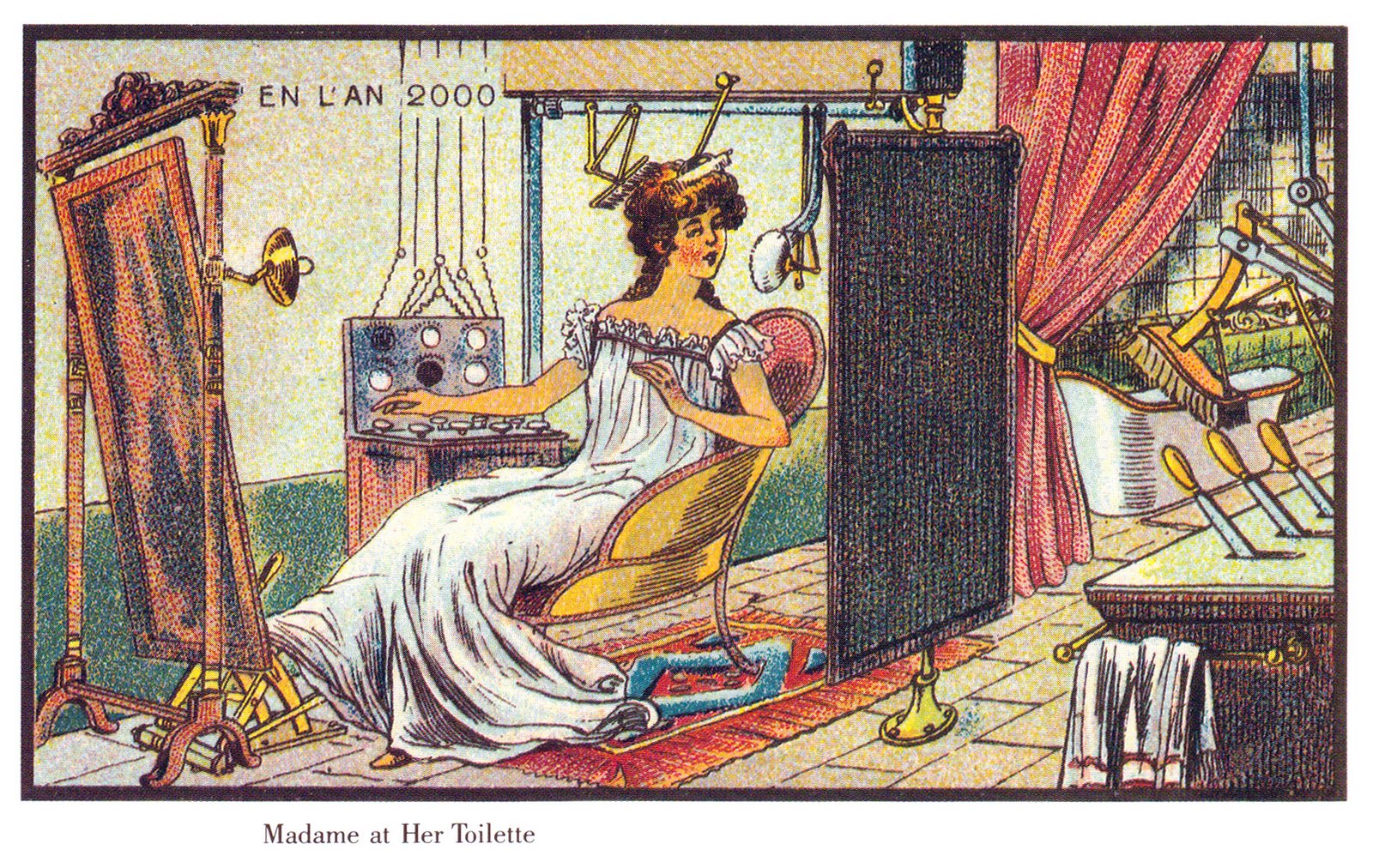The fantastic future, as envisioned in 1899
These French artists had whimsical ideas of what technology and innovation would look like by the turn of the millennium



(Public Domain/Wikimedia Commons)Take En L'An 2000, a series of about 87 illustrations created primarily by a French commercial artist named Jean-Marc Cote, along with a few other collaborators, between 1899 and 1910. Roughly translated to "France in the Year 2000," the whimsical drawings depict what these early 20th century artists believed life 100 years later might be like.The collection delivers an abundance of bizarre and fanciful ideas about where technology could have taken us (to the depths of the sea aboard giant seahorses) and where it sometimes did (to the skies in gravity-defying airships).


(Public Domain/Wikimedia Commons)The backstory for the illustrations can be painted with only broad strokes: A cigarette company apparently commissioned the artwork to be printed on decorative cards inside cigarette and cigar boxes (by some accounts the company was a toy manufacturer instead) before later being turned into postcards.Some of the postcards were then produced for the Exposition Universelle of 1900, a world's fair held in Paris that celebrated the nation's past achievements while offering a glimpse of the future.

But the commissioning company hit hard times and the work was never distributed, lost to the black hole of time. Until, that is, American science fiction writer Isaac Asimov happened across a miraculously preserved set and published them in his 1986 book Futuredays: A Nineteenth Century Vision of the Year 2000.Incredibly, some of the artists' predictions came true, give or take a decade: One illustration features a cleaning robot mirroring the idea behind the modern-day Roomba; others theorize about moving homes (hello, trailers) and mechanized farming (we're basically there).


(Public Domain/Wikimedia Commons)A number of innovations remain hilariously unfathomable: Books fed directly into one's brain by an osmosis-like contraption is still but a fantasy for today's time-strapped scholars, and we've yet to make much progress in the way of mass underwater sporting events or whale-drawn buses.There is also a telling limit to the artists' prescience: There's no space travel, no personal computer, and much of the machinery functions by levers, pulleys, and propellers — the common mechanical features of the early 1900s. Fashion and gender roles also remain rigidly entrenched in 20th century norms.Taken together, the collection is an insightful visual time capsule into the early 20th century imagination. Below, enjoy this steampunk-style journey to our futuristic past.








A free daily email with the biggest news stories of the day – and the best features from TheWeek.com
Kelly Gonsalves is a sex and culture writer exploring love, lust, identity, and feminism. Her work has appeared at Bustle, Cosmopolitan, Marie Claire, and more, and she previously worked as an associate editor for The Week. She's obsessed with badass ladies doing badass things, wellness movements, and very bad rom-coms.
-
 11 hotels opening in 2026 to help you reconnect with nature
11 hotels opening in 2026 to help you reconnect with natureThe Week Recommends Find peace on the beaches of Mexico and on a remote Estonian island
-
 Zimbabwe’s driving crisis
Zimbabwe’s driving crisisUnder the Radar Southern African nation is experiencing a ‘public health disaster’ with one of the highest road fatality rates in the world
-
 The Mint’s 250th anniversary coins face a whitewashing controversy
The Mint’s 250th anniversary coins face a whitewashing controversyThe Explainer The designs omitted several notable moments for civil rights and women’s rights
